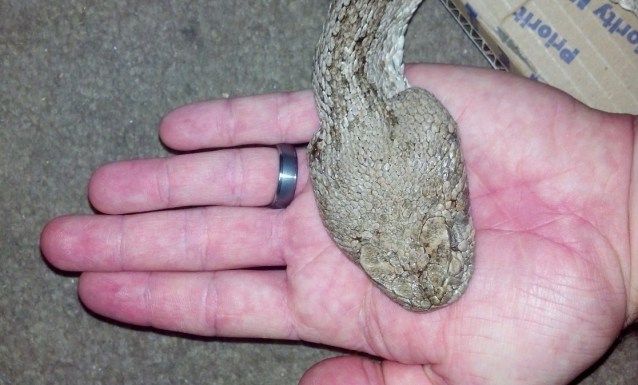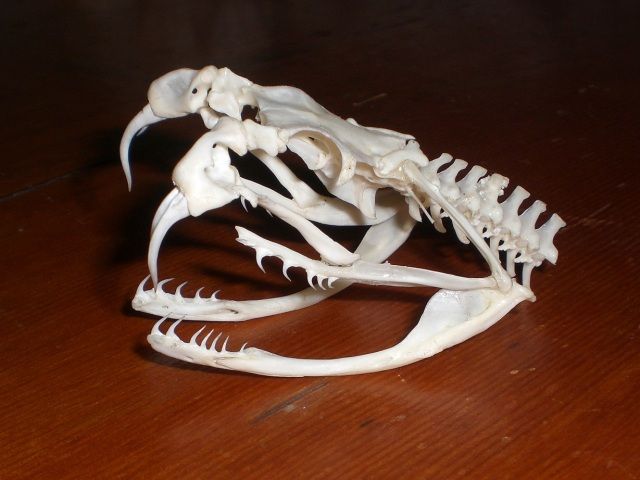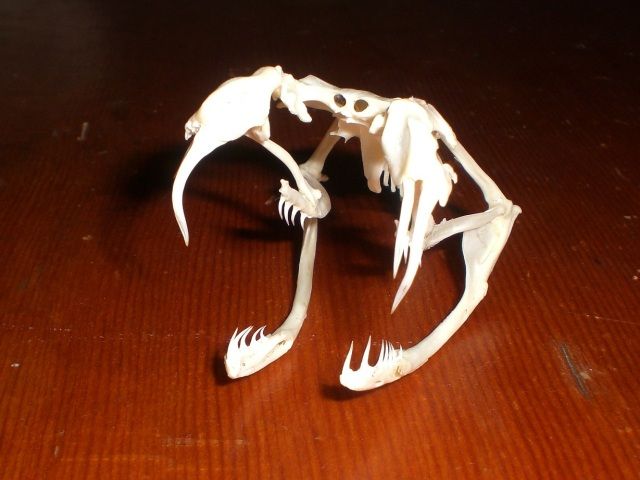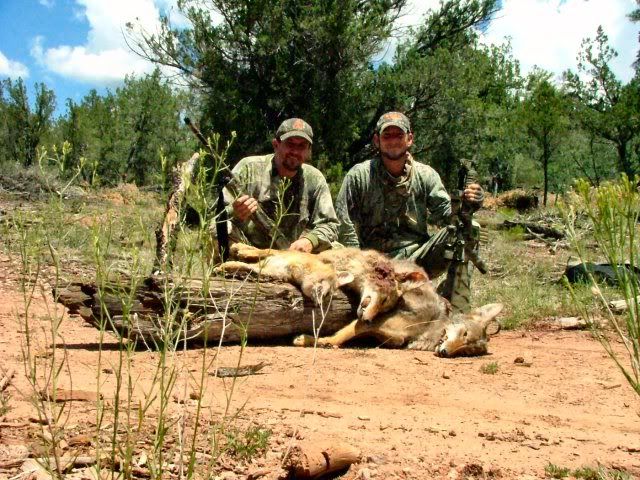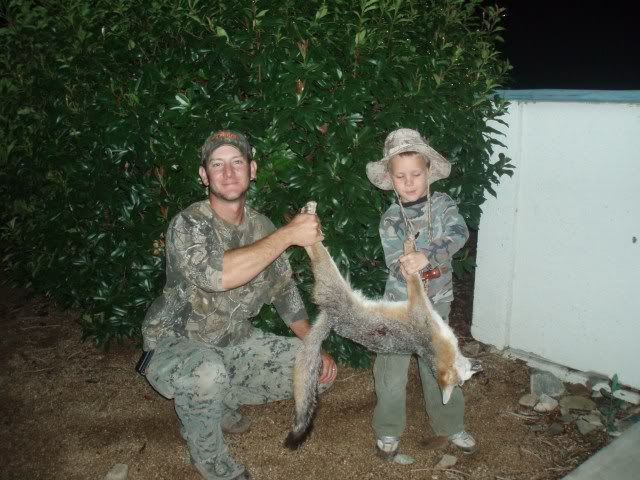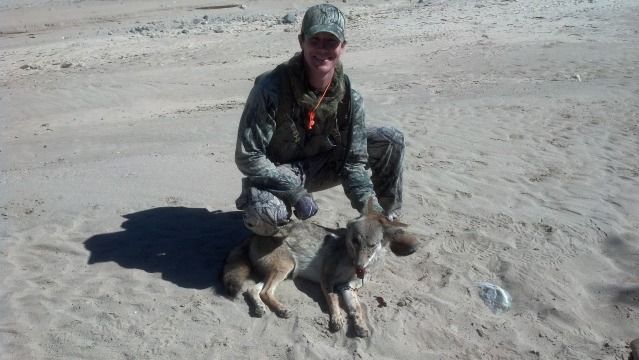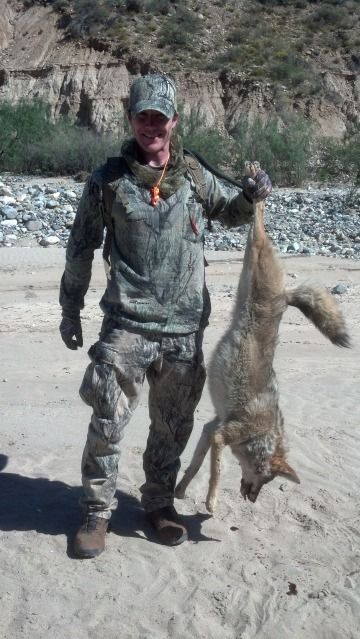I once heard someone that I respect say, "Anything you learn but can't share is wasted." To that end, I really enjoy taking new hunters out to get some predators in front of them, and this past Monday I had the opportunity to go hunting with a new predator hunter named Matt.
We got to the first stand at daylight, which in the past has been a stand that has really produced for me, as it is on private land. In the last year, however, one of the owners has moved onto the land, and that activity seems to have driven the predators along another path somewhere other than this small patch of land. As a consequence, neither the first nor second stand produced anything other than a few cows - cranky cows, I might add.
The third stand found me sitting on a hill overlooking the entire area while Matt hung close to my FoxPro with his shotgun, in hopes that anything we drew up the security routes close to the caller would fall to a load of #4 buckshot. After about 10 minutes of prey distress, I switched to pup distress, and when that failed to produce anything after a few minutes, I called the stand off. As I always do when I end a stand, I stood up slowly and surveyed the area, hoping to catch a sight of any approaching animals I hadn't already seen. As I scanned, I caught movement on a hill about 300 yards away - it was an animal in the shadows that appeared to be approaching the stand, but I couldn't make it out. I took a solid supported kneeling position, and rested my 2 MOA red dot on the general vicinity of the movement, waiting for an opportunity to identify the source. As the animal stepped into the sunlight, I made out the unmistakable outline of a coyote, and when it stopped to do its own survey of the area, I settled that red dot on the chest and compressed the trigger. BANG-FLOP - that coyote went down like a sack of wheat. As we made the long trek to recover the coyote, I realized that this was the longest shot I had ever made on a predator with my unmagnified red dot optic, which is the Primary Arms Micro Dot.
If you click on the picture below, you'll see a red arrow in the top left corner where Matt was sitting, a red circle nect to that where the FoxPro was, and on the hill to the right you will see a small red X - that's where I was when I shot the coyote.
Brand New Re-Learned Lesson #1: Always look around as you are standing up after a stand
Brand New Re-Learned Lesson #2: Shooting practice and training with your hunting firearms pays off
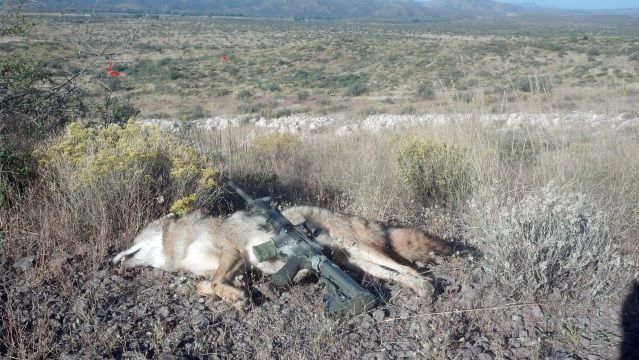
We were both excited to recover the coyote, and it was the first dead predator that Matt had seen up-close. Motivated by our success, we quickly moved on to the next stand, which found us at the bottom of a rocky canyon where we hoped to find some gray fox. As we set up, I told Matt to get ready for some fast and tight action, and then the calling began. Less than 2 minutes into the stand, I heard the BOOM of Matt's shotgun, and as I slowly scanned the canyon walls, I could see a gray fox quickly moving down the canyon towards us, despite Matt's gunfire. As the little fox came within range, the shotgun roared again, and then again. I called the stand off a couple of minutes later, and headed over to see how Matt how done. One dead gray fox lay about 15 feet from Matt, which was the first one that had responded, but the second gray fox has been "released back into the wild" (as we like to call it) for future use. The action had been fast and close-up, and Matt was super excited - he had just killed his first predator!
Brand New Re-Learned Lesson #3: Sit tight on stand, even after you shoot - predators aren't always scared away by a little gunfire
Brand New Re-Learned Lesson #4: Anyone can miss, even with a shotgun - practice with your firearms and be ready for fast action when hunting predators
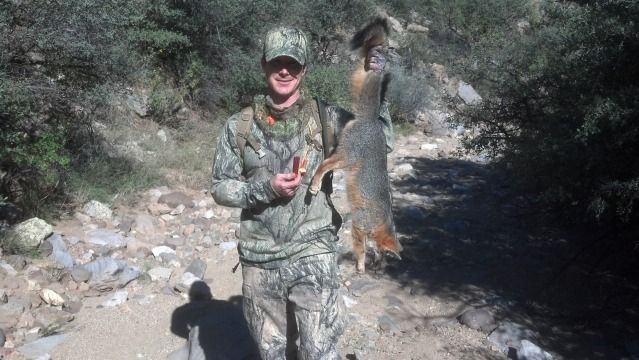
We did a few more stands in that canyon, but to no avail, so we headed off to explore some new country. Hiking into another small canyon, we found ourselves in very tough terrain to hunt, so even though we gave it our best shot at another stand, we decided to continue on down the road after a really tasty lunch. For our first afternoon stand we setup in a big dry wash - it was perfect country to catch a coyote napping in the thick brush, trying to avoid the hot sun. As we settled into position, I decided to go back to using my FoxPro, but when I hit the buttons on the remote, nothing happened. Sometimes the line-of-sight issue can mess with the caller, so I stood up, but still nothing. I walked over to the caller, and discovered that while it was in my bag the speaker switch had gotten turned to off! Turning it back on, I headed back to my cozy little spot under a tree and the calling began. After several minutes of low-volume bird distress, I went to my favorite bird distress call, Lucky Bird, and in less than a minute there was a hard charging coyote headed right for the caller and decoy. The coyote's path would take him right in front of Matt, which was just as we'd planned. I lost sight of the coyote behind a small bush as he got within 2-3 feet of the caller, and then BOOM BOOM -Matt's shotgun roared twice, but before I could figure out what had happened, I saw the coyote headed right towards Matt! The coyote was literally charging straight towards him, but Matt still had 1 shotgun shell left and he dumped it right into the coyote's face - at around 15 feet! The dog went down hard, and since Matt was out of rounds, we ended the stand. Wow! What an event we had just witnessed, and Matt had just dumped his second predator! If you click on the top picture below, you'll be able to see all of the pellet holes in the coyote's face - it was quite a shot!
Brand New Re-Learned Lesson #5: Even if you have some issues getting everything setup just right, always play out a stand that looks too good to pass up
Brand New Re-Learned Lesson #6: With predator hunting, you have to be Ready for Anything!
After we left the dry wash, we found some seriously attractive bobcat country, but a couple of stands yielded nothing other than a few hawks trying to scoop up the caller, so we decided to call it a day. And what a day it was! One of the things that I like to tell all of the hunters that I hunt with at the end of the hunt is that every time I go out, I either learn something new or re-learn old lessons - if you're not learning, then you're not trying hard enough! Matt went home very happy, and there were plenty of brand new lessons and old lessons that were re-learned for both of us.
Happy Hunting!

